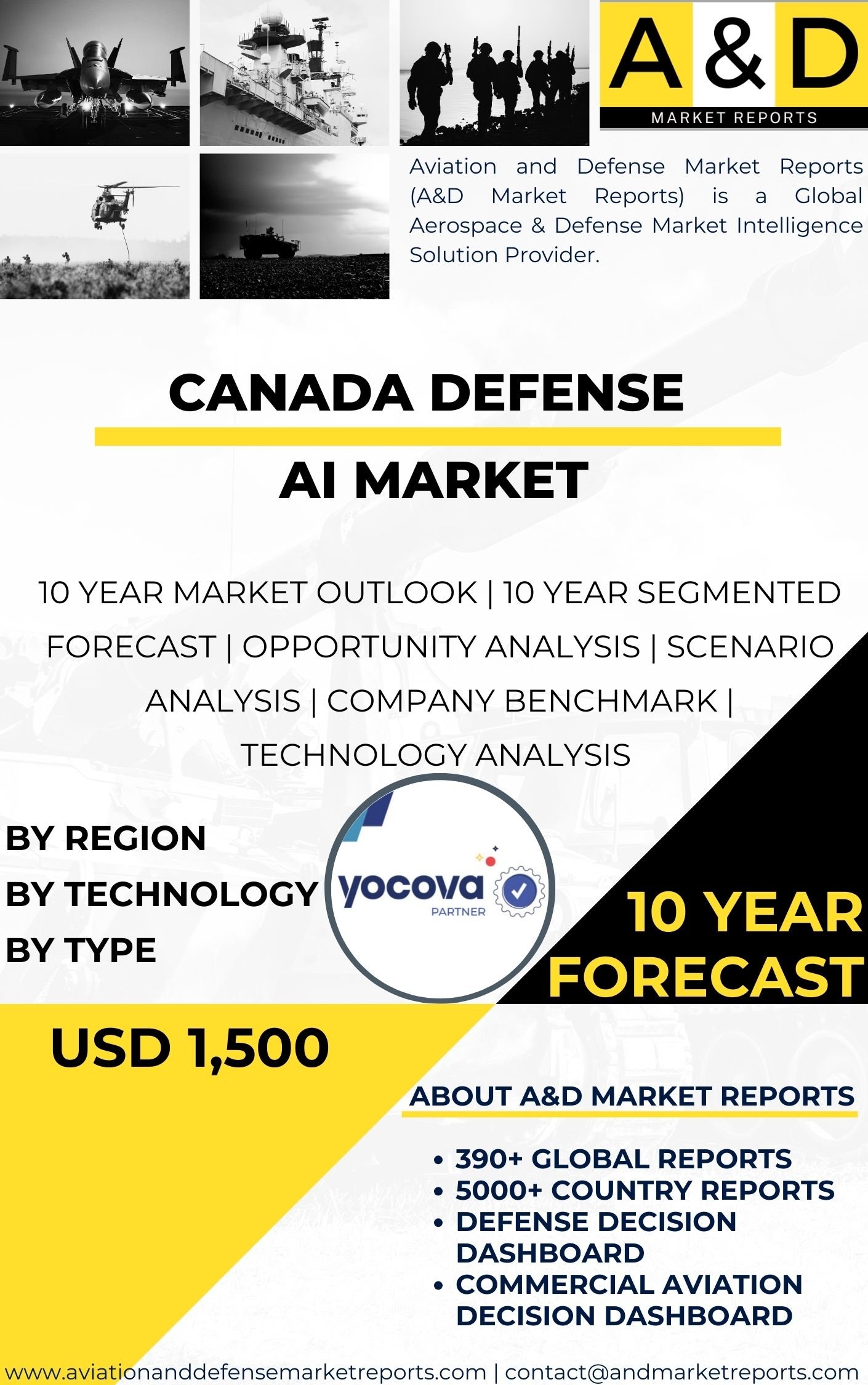Description
Canada’s defense sector is increasingly embracing artificial intelligence (AI) as a transformative technology with the potential to revolutionize various aspects of military operations. AI offers unique advantages in terms of data analysis, decision-making, autonomous systems, and cybersecurity. As the technology continues to evolve, Canada leverages AI to enhance its defense capabilities, strengthen its industrial base, and address operational challenges.
One of the critical applications of AI in defense is data analysis. The vast amount of data generated by various defense systems, sensors, and intelligence sources can overwhelm human analysts. AI-powered algorithms can process and analyze this data at unprecedented speed, enabling timely and accurate decision-making.
By using AI to extract actionable insights from vast datasets, Canada’s defense forces can gain a deeper understanding of complex and dynamic operational environments.
AI also plays a significant role in improving situational awareness. By integrating AI with various sensors and surveillance systems, Canada can enhance real-time monitoring and intelligence gathering.
AI-driven analytics help identify patterns, anomalies, and potential threats, enabling proactive responses to emerging challenges.
In naval operations, AI is used to optimize ship movements, detect and counter maritime threats, and enhance maritime domain awareness.
In the context of air operations, AI assists in optimizing flight routes, enhancing airspace management, and improving aircraft maintenance through predictive analytics.
Ground forces benefit from AI-enabled systems that analyze terrain data, predict enemy movements, and support mission planning.
AI is also at the forefront of autonomous systems development, which has significant implications for Canada’s defense capabilities.
Unmanned systems, such as drones and autonomous ground vehicles, are being increasingly integrated into defense operations.
AI enables these systems to operate independently, perform reconnaissance, surveillance, and deliver supplies, reducing the risk to human personnel in dangerous environments.
The Canadian Armed Forces leverage AI to develop and operate unmanned systems that can perform a range of tasks, from intelligence gathering to combat support.
In addition to autonomous systems, AI is driving innovation in robotics. Human-robot teaming, where AI-powered robots collaborate with human operators, is an emerging concept in defense operations.
These human-machine partnerships enhance the capabilities of soldiers and support personnel, enabling more efficient and effective mission execution.
Moreover, AI is a critical enabler of cyber defense. The increasing frequency and sophistication of cyberattacks pose significant challenges to national security.
AI-powered cybersecurity tools help detect and respond to cyber threats in real-time, safeguarding critical defense infrastructure and sensitive information.
Canada’s defense industry collaborates with academic institutions and research organizations to advance AI technologies continually.
Research and development efforts focus on improving AI algorithms, developing AI-driven applications, and exploring ethical and responsible AI use in defense.
The Canadian government emphasizes the importance of responsible AI development, ensuring transparency and accountability in the use of AI technologies.
The integration of AI into defense operations also requires a focus on human-machine teaming.
Training and education programs are conducted to equip military personnel with the skills and understanding needed to effectively work alongside AI systems.
Additionally, Canada’s defense sector works closely with domestic and international defense companies to leverage their expertise in AI.
Collaborations foster innovation and facilitate the integration of cutting-edge AI technologies into defense programs and systems.
The Canadian Armed Forces conduct comprehensive exercises and simulations to test AI-driven systems in realistic scenarios.
These exercises enhance readiness and evaluate the effectiveness of AI applications in different operational environments.
As AI continues to evolve, Canada recognizes the need for a national AI strategy that encompasses the defense sector.
Such a strategy would guide investments, foster innovation, and ensure that Canada remains at the forefront of AI development and implementation in defense.
Canada’s commitment to ethical AI use is essential in the defense sector, where AI has the potential to influence life-and-death decisions.
As AI becomes more pervasive in defense operations, the Canadian government emphasizes the importance of maintaining human control over critical decision-making processes.
Moreover, responsible AI governance is essential to safeguarding privacy, upholding human rights, and ensuring the integrity of defense operations.
In conclusion, AI is a transformative technology that is reshaping Canada’s defense sector.
AI-driven data analysis enhances decision-making and situational awareness, enabling Canada’s defense forces to respond effectively to complex and dynamic challenges.
The integration of AI with autonomous systems, robotics, and cybersecurity strengthens Canada’s defense capabilities across air, land, and sea domains.
Canada’s defense industry collaborates with academic institutions and research organizations to advance AI technologies continually.
Ethical and responsible AI development is prioritized, ensuring transparency and accountability in the use of AI technologies.
Training and education programs equip military personnel with the skills needed for human-machine teaming.
Collaboration with domestic and international defense companies fosters innovation and integration of cutting-edge AI technologies.
As AI continues to evolve, a national AI strategy guides investments and ensures that Canada remains a leader in AI development and implementation in defense.
Responsible AI governance is crucial to uphold privacy, human rights, and the integrity of defense operations.
By harnessing the potential of AI, Canada is enhancing its defense capabilities and maintaining its position as a responsible and capable player in the global security landscape.




